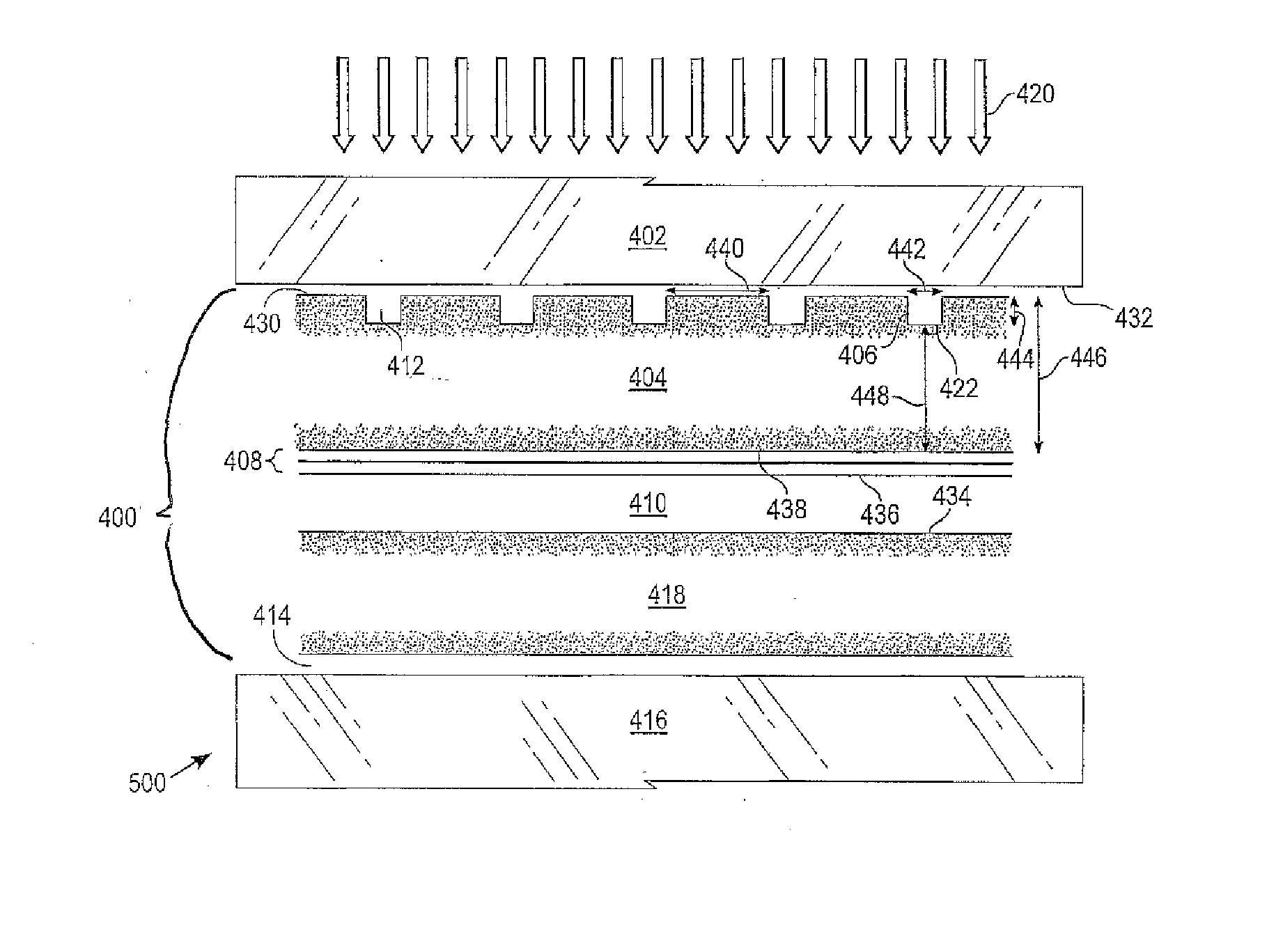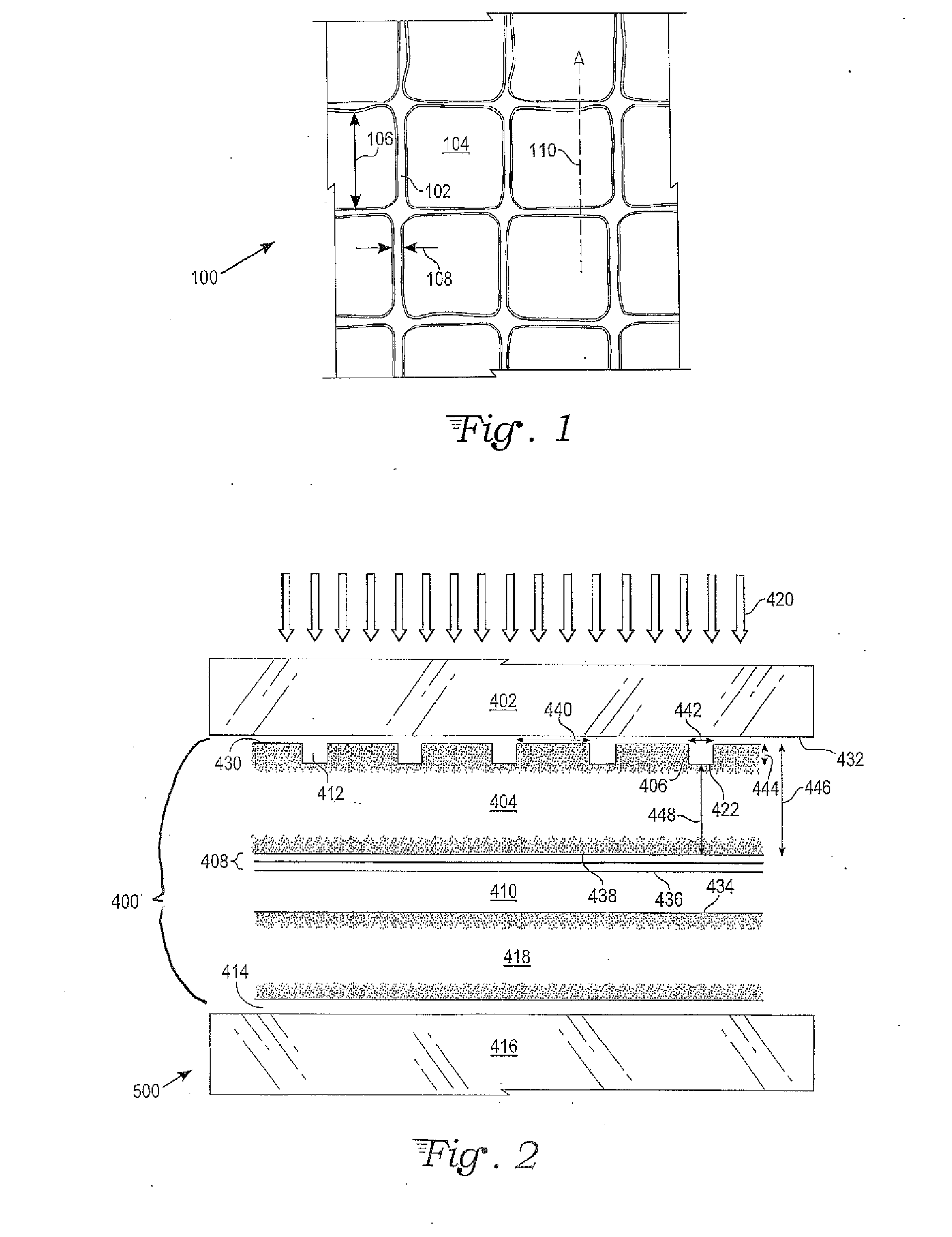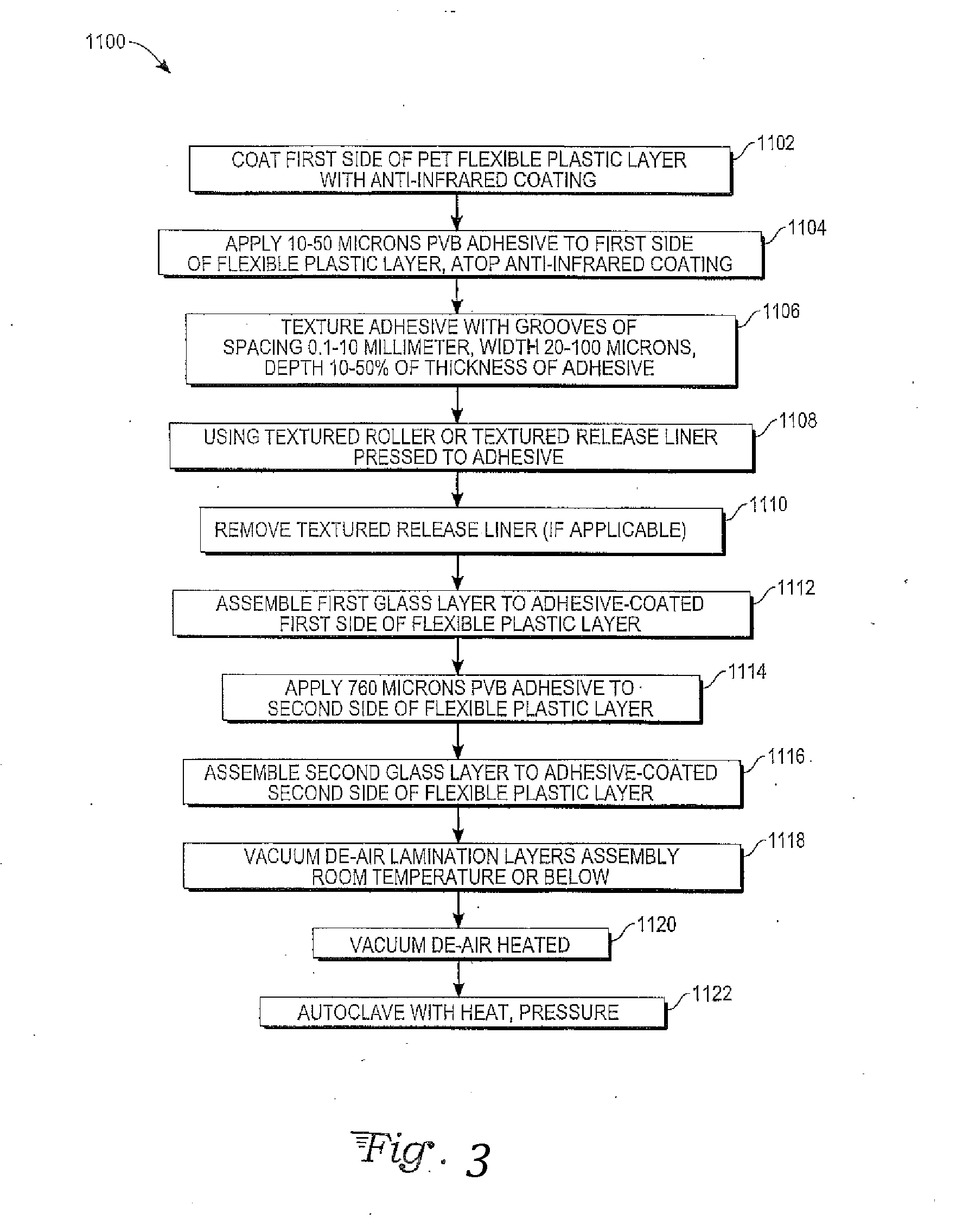Glass Laminate Using Textured Adhesive
a technology of textured adhesives and glass, applied in the field of laminated materials, can solve the problems of adding optical distortion to laminated safety glass, surface roughness (and/or thickness differences) can be visible as optical distortion, and formation of another type of optical distortion referred to as waviness or orange peel
- Summary
- Abstract
- Description
- Claims
- Application Information
AI Technical Summary
Benefits of technology
Problems solved by technology
Method used
Image
Examples
Embodiment Construction
)
[0039]With reference to FIGS. 1-3, an adhesive-coated plastic material (400), a laminate assembly (500) and a method (1100) for laminating glass are presented herein, all of which use a pattern (100) of grooves texturing a thin adhesive layer. The grooves generally allow formerly trapped air to escape during a lamination process, which results in a glass laminate, such as used for safety glass, that is essentially free of macroscopically visible air bubbles even in a thin adhesive layer. Feature sizes in the drawings are exaggerated for emphasis, and are not shown to scale.
[0040]Embodiments of the adhesive-coated plastic material, laminate assembly and method for laminating glass can be used to form glass laminates, including laminated safety glass, having any shape, including but not limited to, flat and complex curved shapes. The adhesive-coated plastic material, laminate assembly and method for laminating glass is especially useful in complex curved shapes, such as windshields w...
PUM
| Property | Measurement | Unit |
|---|---|---|
| thickness | aaaaa | aaaaa |
| thickness | aaaaa | aaaaa |
| thickness | aaaaa | aaaaa |
Abstract
Description
Claims
Application Information
 Login to View More
Login to View More - R&D
- Intellectual Property
- Life Sciences
- Materials
- Tech Scout
- Unparalleled Data Quality
- Higher Quality Content
- 60% Fewer Hallucinations
Browse by: Latest US Patents, China's latest patents, Technical Efficacy Thesaurus, Application Domain, Technology Topic, Popular Technical Reports.
© 2025 PatSnap. All rights reserved.Legal|Privacy policy|Modern Slavery Act Transparency Statement|Sitemap|About US| Contact US: help@patsnap.com



